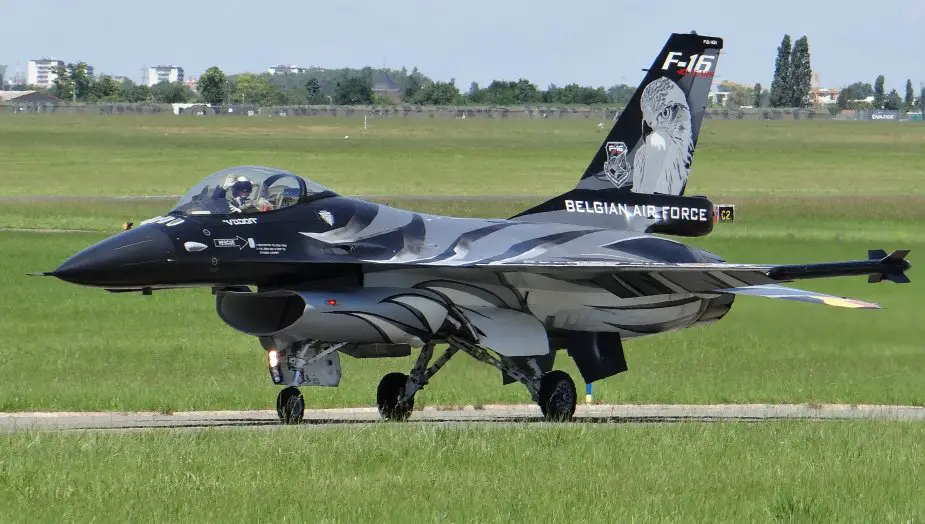Although the F-16 AM/BM Fighting Falcon of the Belgian Air Component will be withdrawn from service by 2028, they nevertheless benefit from a last update to integrate, among others, the last version of the B61 nuclear bomb, the -12 currently under development.
 Belgian F-16A/M with a special delivery for airshow displays (Picture source: Wikipedia)
Belgian F-16A/M with a special delivery for airshow displays (Picture source: Wikipedia)
Although the Belgian F-16s have a remaining life expectancy of no more than 10 years before being replaced by 34 Lockheed Martin F-35A Lightning IIs, the Air Force wants the aircraft to remain at their best and carry out their tasks. One of these tasks is to carry the US-made B61 nuclear bomb. Indeed, the Americans are modernizing their arsenal with a -12 of their B61 nuclear bomb, a variant that, instead of being dropped and fall by gravitation, will glide toward its target, enabling a launch from farther than the current B61, and seemingly have a penetration power. To carry this type of weaponry in the framework of NATO missions, the Belgian fighters must be adapted. The information is deducted from the "Material Management Plan F-16", an internal Defense document dating back to 2017 but still relevant.
The Belgian F-16 fleet currently counts 54 F-16s (including 9 two-seater aircraft). These planes are spread over two bases: Kleine Brogel and Florennes.
2nd Tactical Wing, at Florennes Air Base
1st Squadron (F-16AM Falcon)
350th Squadron (F-16AM Falcon)
* 10th Tactical Wing, at Kleine Brogel Air Base
31st Squadron (F-16AM Falcon)
349th Squadron (F-16AM Falcon)
Operational Conversion Unit (F-16BM Falcon)
Another modernisation of the Belgian F-16s will be the retrofit of a SATCOM system, as their Syrian war experience demonstrated that, when not benefiting from the signal coverage by an AWACS, radio transmissions between the aircraft and their operational center is sometimes too weak.
Thanks to the Mid-Life Update (MLU) program, the F-16 remains capable of performing all operational missions. The introduction of MLU (Mid-Life Update) on the F-16 in the early 1990s highlighted the need for continuous modernization. Since then, a modification cycle lasting about three years has been practiced. The changes are designated by a number preceded by the letter M. After an initial Operational Assessment (EOA) and the subsequent test and evaluation (Operational Test & Evaluation, OT & E), the M6.1 version has been installed as standard on all Belgian F-16s.
















